Photo
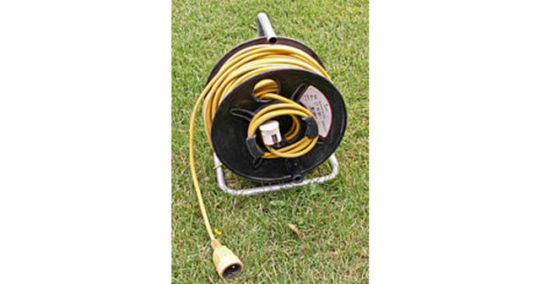
Reel
For other uses, see Reel (disambiguation). A 250V-16A electrical wire on a reel An irrigation reel with travelling sprinkler A reel is an object around which lengths of another material (usually long and flexible) are wound for storage. Generally a reel has a cylindrical core and walls on the sides to retain the material wound around the core. In some cases the core is hollow, although other items may be mounted on it, and grips may exist for mechanically turning the reel.
More details Android, Windows
0 notes
Photo
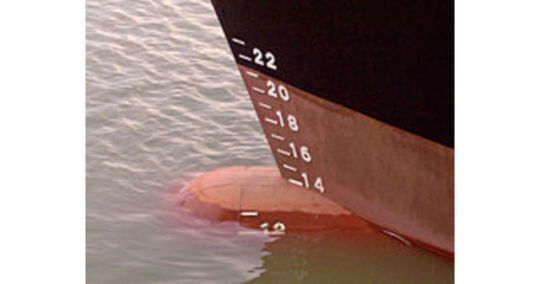
Displacement
The more heavily loaded a ship is, the lower it sits in the water. "Designated displacement" is a measurement the weight of water a ship displaces of when fully loaded and submerged to her load lines.[citation needed] The displacement or displacement tonnage of a ship is the ship's weight. The name reflects the fact that it is measured indirectly, by first calculating the volume of water displaced by the ship, and then calculating the weight of that water. By Archimedes' principle, this is also the weight of the ship. Displacement should not be confused with other measurements of volume or capacity typically used for commercial vessels such as net tonnage, gross tonnage, or deadweight tonnage.
More details Android, Windows
0 notes
Photo

Spar buoy
A diagram of an anchored spar buoy. A spar buoy is a tall, thin buoy that floats upright in the water and is characterized by a small water plane area and a large mass. Because they tend to be stable ocean platforms, spar buoys are popular for making oceanographic measurements. Adjustment of the water plane area and the mass allows spar buoys to be tuned so they tend to not respond to wave forcing. This characteristic differentiates them from large water plane area buoys such as discus buoys that tend to be wave followers. Spar buoys are often used as stable platforms for wave measurement devices and air–sea interaction measurements. Spar buoys range in length from a few feet to the 354-foot (108 meter) RV FLIP. To avoid the difficulties inherent with shipboard launch and recovery, helicopter deployment of large spar buoys has been studied.
More details Android, Windows
0 notes
Photo
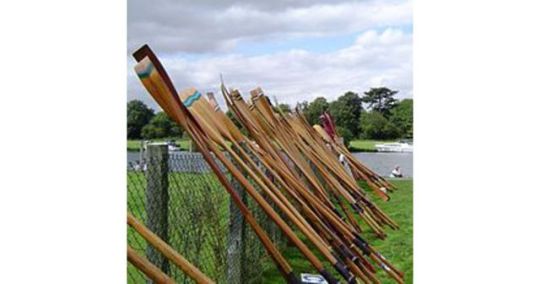
Oar
This article is about the implement used for water-borne propulsion. For other uses, see OAR (disambiguation). Traditional wooden oars An oar is an implement used for water-borne propulsion. Oars have a flat blade at one end. Rowers grasp the oar at the other end. The difference between oars and paddles are that paddles are held by the paddler, and are not connected with the vessel. Oars generally are connected to the vessel by means of rowlocks or tholes which transmit the applied force to the boat. In this system (known as a second class lever) the water is the fulcrum. Rowers generally face the stern of the vessel, reach towards the stern, and insert the blade of their oar in the water. As they lean back, towards the vessel's bow, the blade of their oars sweeps the water towards the stern, providing forward thrust – see lever. For thousands of years vessels were powered either by sails, or the mechanical work of rowers, or paddlers. Some ancient vessels were propelled by either oars or sail, depending on the speed and direction of the wind (see galley).
More details Android, Windows
0 notes
Photo
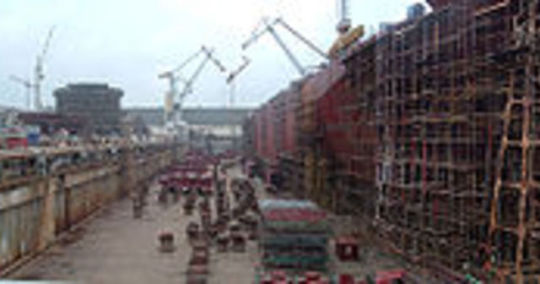
Shipyard
Zürichsee-Schifffahrtsgesellschaft in Zürich-Wollishofen, Switzerland Gdynia Shipyard Constanța Shipyard, Romania Shipyards and dockyards are places where ships are repaired and built. These can be yachts, military vessels, cruise liners or other cargo or passenger ships. Dockyards are sometimes more associated with maintenance and basing activities than shipyards, which are sometimes associated more with initial construction. The terms are routinely used interchangeably, in part because the evolution of dockyards and shipyards has often caused them to change or merge roles. Countries with large shipbuilding industries include China, Singapore, South Korea, Japan, Russia, Germany, Netherland, Sweden, Ukraine, Finland, Denmark, Australia, India, Brazil, Taiwan, Romania, Poland . The shipbuilding industry tends to be more fragmented in Europe than in Asia. In European countries there are a greater number of small companies, compared to the fewer, larger companies in the shipbuilding countries of Asia. Most shipbuilders in the United States are privately owned, the largest being Huntington Ingalls Industries, a multibillion-dollar defense contractor, and the oldest family owned shipyard being Colonna's Shipyard in Norfolk, VA. The publicly owned shipyards in the US are Naval facilities providing basing, support and repair. Shipyards are constructed nearby the sea or tidal rivers to allow easy access for their ships. In the United Kingdom, for example, shipyards were established on the River Thames (King Henry VIII founded yards at Woolwich and Deptford in 1512 and 1513 respectively), River Mersey, River Tees, River Tyne, River Wear and River Clyde – the latter growing to be the World's pre-eminent shipbuilding centre. Sir Alfred Yarrow established his yard by the Thames in London's Docklands in the late 19th century before moving it northwards to the banks of the Clyde at Scotstoun (1906–08). Other famous UK shipyards include the Harland and Wolff yard in Belfast, Northern Ireland, where Titanic was built, and the naval dockyard at Chatham, England on the Medway in north Kent. The site of a large shipyard will contain many specialised cranes, dry docks, slipways, dust-free warehouses, painting facilities and extremely large areas for fabrication of the ships. After a ship's useful life is over, it makes its final voyage to a shipbreaking yard, often on a beach in South Asia. Historically shipbreaking was carried on in drydock in developed countries, but high wages and environmental regulations have resulted in movement of the industry to developing regions.
More details Android, Windows
0 notes
Photo

Swivel
For other uses, see Swivel (disambiguation). A swivel in a chain link A swivel in a link A swivel is a connection that allows the connected object, such as a gun or chair, to rotate horizontally or vertically. A common design for a swivel is a cylindrical rod that can turn freely within a support structure. The rod is usually prevented from slipping out by a nut, washer or thickening of the rod. The device can be attached to the ends of the rod or the center. Another common design is a sphere that is able to rotate within a support structure. The device is attached to the sphere. A third design is a hollow cylindrical rod that has a rod that is slightly smaller than its inside diameter inside of it. They are prevented from coming apart by flanges. The device may be attached to either end. A swivel joint for a pipe is often a threaded connection in between which at least one of the pipes is curved, often at an angle of 45 or 90 degrees. The connection is tightened enough to be water- or air-tight and then tightened further so that it is in the correct position.
More details Android, Windows
0 notes
Photo
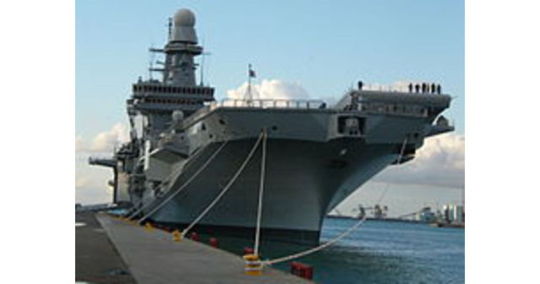
Watch system
Main article: Watchstanding A watch system, watch schedule, or watch bill is a method of assigning regular periods of work duty aboard ships and some other areas of employment. A watch system allows the ship's crew to effectively operate the ship 24 hours a day for the duration of long voyages or operations. Many watch systems incorporate the concept of dogging, whereby one watch is split into two shorter watches so that there is an odd number each day. Doing so allows crew members to have a different watch schedule each day. Often, the dog watches are set at dinner time to allow the entire crew to be fed in short order.
More details Android, Windows
0 notes
Photo
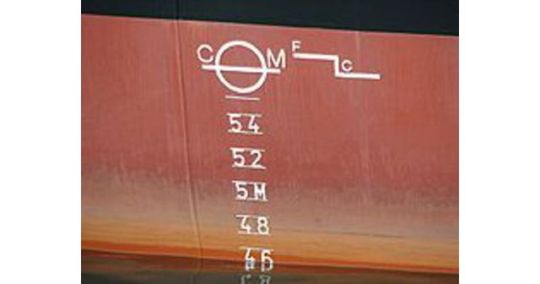
Waterline
"Plimsoll line" redirects here. For the use of the Plimsoll symbol in chemistry, see Standard state. For other uses, see Waterline (disambiguation). Load line mark and lines on the hull of a ship The waterline is the line where the hull of a ship meets the surface of the water. Specifically, it is also the name of a special marking, also known as an international load line, Plimsoll line and water line (positioned amidships), that indicates the draft of the ship and the legal limit to which a ship may be loaded for specific water types and temperatures in order to safely maintain buoyancy, particularly with regard to the hazard of waves that may arise. Temperature affects the level, because warm water provides less buoyancy, being less dense than cold water, as does salinity, because fresh water is less dense than seawater. For vessels with displacement hulls, the hull speed is determined by, among other things, the waterline length. In a sailing boat, the waterline length can change significantly as the boat heels, and can dynamically affect the speed of the boat. The waterline can also refer to any line on a ship's hull that is parallel to the water's surface when the ship is afloat in a normal position. Hence, all waterlines are one class of "ships lines" used to denote the shape of a hull in naval architecture plans. In aircraft design, the term "waterline" refers to the vertical location of items on the aircraft. This is (normally) the "Z" axis of an XYZ coordinate system, the other two axes being the fuselage station (X) and buttock line (Y).
More details Android, Windows
0 notes
Photo

Buoy
"Buoys" redirects here. For the band, see The Buoys. For the French commune, see Bouy. For the Norwegian island, see Buøy. A sea lion on navigational buoy #14 in San Diego Harbor. Green can #11 near the mouth of the Saugatuck River. NOAA Weather buoy A buoy (/ˈbɔɪ/, also /ˈbwɔɪ/ or US /ˈbuːiː/) is a floating device that can have many purposes. It can be anchored (stationary) or allowed to drift with the sea wave. The word, of Old French or Middle Dutch origin, is (in British English) now most commonly pronounced /ˈbɔɪ/ (identical with boy, as in buoyant). In American English the pronunciation is closer to "boo-ee."
More details Android, Windows
0 notes
Text
Broach
RS K6 Keelboat broaching A sailboat broaches when its heading suddenly changes towards the wind due to wind/sail interactions for which the rudder cannot compensate. This happens when the aerodynamic force on the rig greatly exceeds the hydrodynamic force on the hull, due to a sudden increase in wind strength or turbulent sea conditions. In small boats and dinghies, broaching can lead to a death roll. In larger boats broaching can lay the mast horizontal, putting both rig and crew at risk. It can be particularly dangerous when racing other boats at close quarters.
More details Android, Windows
0 notes
Photo

Bootsmannsmaat
Bootsmannsmaat, short BtsmMaat/BMT (en Boatswain`s mate), was in the Austro-Hungarian Navy (1786-1918) so-called enlisted rang (OR4) and in the Imperial German Navy a non-commissioned officer (NCO) OR5-rank. The Bootsmannsmaat is equivalent to the Unteroffizier / Unterfeldwebel of the German Bundeswehr. They belong to the rank group “NCOs without portepee”. Beside Austria and Russia the German Empire introduced the Bootsmannsmaat (in connection with the rank Maat and the assignment – leader of a subunit) as lowest grade of the rank grop “NCOs without portepee of the Imperial German Navy. In the Weimarer Republik and the Kriegsmarine of the Third Reich the rank was retained. The Bootsmannsmaat was equivalent to the Unteroffizier in Heer und Luftwaffe. Regarding the particular career or assignment the sequence of ranks (both of them OR5 / second mates) and the grade description was established as follows: for Maate (en: mates) – Bootsmannsmaat (en: boatswain`s mate), Feuerwerksmaat (en: firework`s mate), Maschinistenmaat (en: engineman`s mate), or Steuermannsmaat (en: steersman`s mate) for Obermaate (en: senior mates) – Oberbootsmannsmaat (en: senior boatswain`s mate), Oberfeuerwerksmaat (en: senior firework`s mate), Obermaschinistenmaat (en: senior enginemen`s mate), or Obersteuermannsmaat (en: senior steersman`s mate)
More details Android, Windows
0 notes
Photo

Bilge keel
A bilge keel. A bilge keel is used to reduce a ship's tendency to roll. Bilge keels are employed in pairs (one for each side of the ship). A ship may have more than one bilge keel per side, but this is rare. Bilge keels increase hydrodynamic resistance to rolling, making the ship roll less. Bilge keels are passive stability systems. On commercial shipping the bilge keel is the form of a strake, or small keel or blister, running along much of the length of the hull. They are typically fitted one on each side, low down on the side of the hull, so as not to increase the draft of the vessel. In battleships they were often quite large and used as part of the torpedo protection system. A bilge keel is often in a "V" shape, welded along the length of the ship at the turn of the bilge. Although not as effective as stabilizing fins, bilge keels have a major advantage in their low impact on internal ship arrangements. Unlike fins, bilge keels do not have any components inside the hull that would adversely affect cargo or mission spaces. Like fins, bilge keels have the disadvantage of increasing the hydrodynamic resistance of the vessel, thus hindering forward motion.
More details Android, Windows
0 notes
Text
Operations room
This article is about the military command and control center. For the civilian control center, see Operations center. Plan position indicator (PPI) display showing polar display and radar sweep. A real radar display would show hard terrain features and look recognizably map-like, and from the sea, match well with land features of local nautical charts matching and sending strong clean radar echos back to the ship at sea. Plan position indicator (PPI) display showing Doppler radar weather data The Operations Room (also known as the Combat Information Center, or, under the British system, the Action Information Centre) is the tactical center of a warship or AWAC aircraft providing processed information for command and control of the near battlespace or 'area of operations'. Within other military commands, rooms serving similar functions are called by the similar "Command Information Center" or simply "Command center"; the number of different terms for spaces that serve much the same function may explain why the plain and generally non-descriptive "Operations Center" is a prevalent term.[citation needed] Regardless of the vessel or command locus, each CIC organizes and processes information into a form more convenient and usable by the commander in authority. Each CIC funnels communications and data received over multiple channels, which is then organized, evaluated, weighted and arranged to provide ordered timely information flow to the battle command staff under the control of the CIC officer and his deputies.
More details Android, Windows
0 notes
Text
Spanker
The spanker is lowest left. A spanker is either of two kinds of sail. On a square rigged ship, the spanker is a gaff rigged fore-and-aft sail set from and aft of the aftmost mast. Almost all square rigs with more than one mast have one or two spankers, which evolved from the driver sail. Some also carry a topsail above the uppermost or only spanker, called the gaff sail. A spanker in this situation is often 'soft footed' in that it has no boom to which it is attached at its foot. On a racing or cruising yacht, a spanker is an additional headsail set beside and to leeward of a spinnaker when running downwind. It is often of bright colours to match the particular spinnaker with which it is designed to be used, is relatively narrow, and is sometimes called a tallboy or blooper.[citation needed]
More details Android, Windows
0 notes
Photo
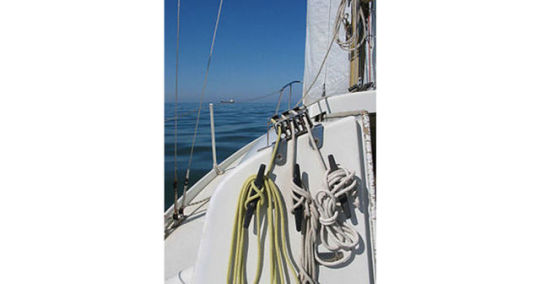
Running rigging
Standing rigging is left, running rigging right. Running rigging is the rigging of a sailing vessel that is used for raising, lowering and controlling the sails - as opposed to the standing rigging, which supports the mast and other spars. Traditionally the running rigging was easily recognized since, for flexibility, it was not coated with tar and therefore of a lighter color than the standing rigging which was tarred for protection from weather and therefore darker or even black in color.
More details Android, Windows
0 notes
Text
Bathometer
A bathometer (also bathymeter) is an instrument for measuring water depth. It was previously used mainly in oceanographical studies, but is rarely employed nowadays. The term originates from Greek βαθύς (bathys), "deep" and μέτρον (métron), "measure".
More details Android, Windows
0 notes
Photo
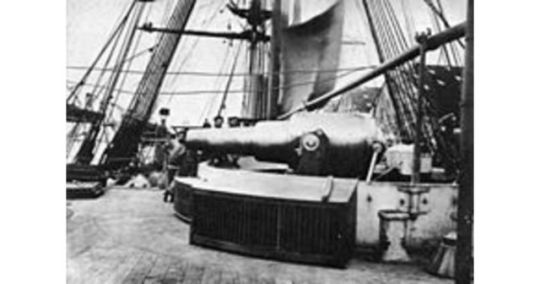
Barbette
For other uses, see Barbette (disambiguation). Barbette for a 25-ton gun on the British ironclad HMS Temeraire Barbettes are several types of gun emplacement in terrestrial fortifications or on naval ships. In recent naval usage, a 'barbette' is a protective circular armour support for a heavy gun turret. This evolved from earlier forms of gun protection that eventually led to the pre-dreadnought. The name ultimately comes from fortification, originally meaning a raised platform or mound, seen in the French phrase en barbette, which refers to the practice of firing a cannon over a parapet rather than through an embrasure in the fortification. The former gives better angles of fire but less protection than the latter. The disappearing gun was a variation on the barbette gun; it consisted of a heavy gun on a carriage that would retract behind a parapet or into a gunpit for reloading. They were primarily used in coastal defences, but saw some use in a handful of warships, and some inland fortifications. The term is also used for certain aircraft gun mounts. Shipboard barbettes were primarily used in armoured warships starting in the 1860s during a period of intense experimentation with other mounting systems for heavy guns at sea; alternatives included the heavily armored gun turret and an armored, fixed central gun battery. By the late 1880s, all three systems were replaced with a hybrid barbette-turret system that combined the benefits of both types. The heavily-armored vertical tube that supported the new gun mount was referred to as a barbette. Guns with restricted arcs of fire mounted in heavy bombers during World War II—such those in the tail of the aircraft, as opposed to fully revolving turrets—were also sometimes referred to as having barbette mounts, though usage of the term is primarily restricted to British publications. American authors generally refer to such mounts simply as tail guns or tail gun turrets.
More details Android, Windows
0 notes